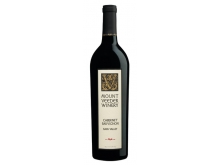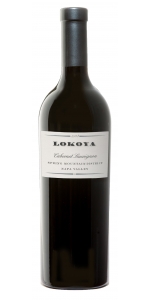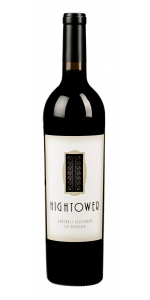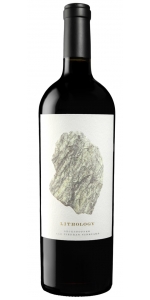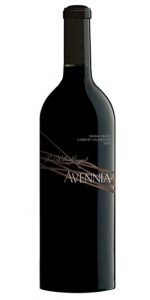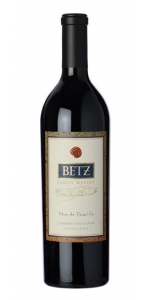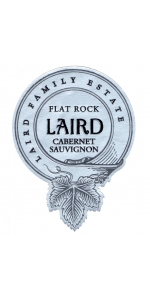Mount Veeder Winery Cabernet Sauvignon 2018
| Country: | United States |
| Regions: | California California (Napa) |
| Winery: | Mount Veeder |
| Grape Type: | Cabernet Sauvignon |
| Vintage: | 2018 |
| Bottle Size: | 750 ml |
Lokoya Spring Mountain Cabernet Sauvignon is made from Napa Valley Cabernet Sauvignon.
Review:
The 2018 Cabernet Sauvignon Spring Mountain District is a monster of a mountain Cabernet that has a primordial bouquet of blackcurrants, smoked earth, chocolate, and graphite. While Spring Mountain wines tend to be more aromatic and complex right out of the gate, that’s not the case here, and this is going to need bottle age to round into form. Full-bodied on the palate, with a rich, concentrated mouthfeel, it has serious tannins, notable purity of fruit, and a great finish. With air, it picks up more and more classic Spring Mountain floral and exotic notes, and it’s flawlessly balanced, with gorgeous tannins and a great, great finish. This is a brilliant wine in the lineup and unquestionably one of the true gems from Spring Mountain in 2018. Give bottles 4-5 years and enjoy over the following 2-3 decades.
-Jeb Dunnuck 98 Points
Hightower Cabernet Sauvignon Red Mountain is made from 94% Cabernet Sauvignon, 6% Petit Verdot.
As Hightower Cellars' signature wine, Cabernet Sauvignon is a classic Red Mountain wine – bold and full of the flavors that make this region so special. As much as possible, Tim and Kelly Hightower take a non-interventionist approach to winemaking. They place great emphasis on vineyard selection, picking, pressing, and blending so that Hightower wines are naturally beautiful and free from pretense. They let the powerful and concentrated fruit from Red Mountain speak for itself. The result is a collection of well-balanced, nuanced wines that reveal something new and interesting each time you open a bottle.
Aromas of tart blueberry and lush red cherry dominate the nose, while firm tannins and full body lend structure to this inky, pigmented wine. The palate features notes of dark fruit, fresh cut wood, and dried tobacco. This wine is an excellent candidate for decanting, as the aromas evolve wonderfully over time to express softer, lush fruit and hints of herbs and spices.
Red Mountain AVA 100% (Hightower Estate Vineyard 56%, E&E Shaw Vineyard 44%)
New Oak 71%, Neutral Oak 29% (American 67%, French 11%, European 11%, Hungarian 11%)
Un-fined and un-filtered
Pairs with grilled red meat, fig and olive tapenade, bacon wrapped dates.
Alejandro Bulgheroni Lithology Beckstoffer Las Piedras Cabernet Sauvignon is made from 100 percent Cabernet Sauvignon.
From a St. Helena vineyard planted by early Napa settler Edward Bale more than 150 years ago, and later serving as the estate vineyard for the area’s first winery built by Henry Pellet in 1860, the Las Piedras site always gives us our prettiest wine. When placed next to Dr. Crane and To-Kalon wines, the Las Piedras show a certain elegance, with a very graceful entry and finely detailed complexity. We produce it with at least 75% new French oak, so there is a floral, spicy, and vanilla accent to the intense red and black fruits, cassis, and black cherry liqueur. What distinguishes this bottling is the beautifully fine tannins, delicate texture, and stunning purity. (Less than 100 cases made.)
Fermentation 70% Oak, 24% Concrete, 6% Puncheon
Review:
"The 2018 Cabernet Sauvignon Lithology Beckstoffer Las Piedras Vineyard comes from a world-class site outside of St. Helena and is all Cabernet that spent 20 months in 80% new oak. It offers a touch more red fruit as well ample cassis, spring flowers, loamy earth, and spice-like aromas and flavors. It has a wonderful sense of minerality, ultra-fine tannins, a dense, layered texture, and incredibly purity of fruit. It’s another just about off the charts release from this estate."
- Jeb Dunnuck 98 Points
Avennia Red Willow Cabernet Sauvignon is made from 100% Cabernet Sauvignon.
The Red Willow Cabernet is a true blockbuster.
Coming from one specific block of 30 year old vines at this iconic vineyard, then strictly barrel selected, this is the essence of powerful, old vine Washington Cabernet. After all of our efforts promoting the idea of the Bordeaux blend, it would take a pretty compelling argument to suspend that idea and make a 100% varietal Cabernet. In 2016 Red Willow provided us with just that. Each time we tasted it in the barrel, the belief grew that this was something special. Something we can't make every year. In the end we were won over, and decided to make a limited amount of this wine. But don't be fooled, as this too is a blend and a selection. Each year as we are tasting the grapes as harvest approaches, we notice that the vines near the bottom of this long, steep west-facing slope, are a little different. The vines at the bottom are in a little richer soil, and get a little more water, so we pick them separately, sometimes even a week or ten days apart, and keep them separate in barrel.
This wine is all from the top of the vineyard, with its lower yield and poorer soils giving more concentration and interest. Then further, nearly every combination of new and used French oak barrels were trialed to find the best blend. It's not enough just to use the four best barrels, but to trial each combination to see how they complement each other. For a wine with this much mass, 100% new French oak was used for the first time at Avennia. It is a wine that needs a little cellaring to start, but should last a very long time.
Review:
The flagship Cabernet, the 2018 Cabernet Sauvignon Red Willow Vineyard is all varietal, from old vines in a great vineyard in Yakima Valley, that spent 20 months in 80% new French oak. It reveals a deep purple hue as well as a backward, brooding nose of smoked blackcurrants, tobacco, scorched earth, and violets. It has beautiful richness yet takes plenty of coaxing to open up. On the palate, it's medium to full-bodied and has a nicely textured, balanced mouthfeel, plenty of tannins, and outstanding length. It's mostly potential at this point and is going to benefit from at least 4-5 years of bottle age, but my money is on it having 20+ years of prime drinking.
-Jeb Dunnuck 96 Points
Betz Family Cabernet Sauvignon Pere de Famille is 88% Cabernet Sauvignon, 10% Petit Verdot and 2% Merlot
Review:
"This is a wine for the ages. Aromas of thyme, the blackest of cherries, licorice, bay leaf and spice are followed by outright delicious, plump fruit flavors. There's a whole lot of primary fruit, with ample structure to hang it all on, along with plenty of depth and intensity. The finish is near endless. It flat-out impresses, with remarkable intensity. Best from 2028 to 2038. - SEAN P. SULLIVAN."
- Wine Enthusiast (September 2021), 95 pts
"A firm, polished red with aromas of blackberry, iodine, tobacco leaf, cocoa and cedar. It’s medium-to full-bodied with firm, chewy tannins. Structured, layered and focused. Lots going on, with a long finish. Try from 2023."
- James Suckling (May 2021), 95 pts
"Incorporating 10% Petit Verdot and 2% Merlot from a mix of sites in the Columbia Valley, the 2018 Cabernet Sauvignon Père De Famille reveals a healthy ruby/purple hue to go with beautiful cassis fruits interwoven with notions of dried rose petals, violets, cedary spice, and chalky minerality. Medium to full-bodied, reasonably well concentrated, yet elegant and beautifully balanced, it opens up nicely with time in the glass and will benefit from 2-4 years of bottle age and keep for 20 years."
- Jeb Dunnuck (May 2021), 95 pts
Laird Cabernet Sauvignon Flat Rock Ranch is made from 100 percent Cabernet Sauvignon.
Laird's Flat Rock Ranch vineyard is located near the north corner of where Yountville Cross Road meets Silverado Trail, on State Lane. This prized, complex fruit from the Yountville Appellation is a result of unique geological and meteorological conditions: volcanic soils similar to the adjacent Stags Leap District, but also display ancient coastal deposits, and sedimentary and alluvial soils that provide beneficial stress for our vines. Marine air currents from San Pablo Bay to the south are caught when they reach the "Yountville Mounts," providing a natural cooling effect that balances warm, sunny days that ripen the rich tannins of our hallmark Cabernet Sauvignon to elegant distinction.
Bold violet-red color introduces a captivating bouquet of blueberries, tea leaf, and vanilla. This full-bodied wine has flavors of cassis, hazelnut and briary undertones with fresh acidity and chewy tannins on the palate
Review:
"The 2018 Cabernet Sauvignon Flat Rock is laced with crème de cassis, menthol, lavender, spice and blueberry jam. Inky and plush, the 2018 also has quite a bit of energy backing it all up. The 2018 is a gorgeous wine from Laird.- Antonio GALLONI"
- Vinous (The 2019 Napa Valley Cabernets: A Deep Dive, January 2022), 93+ pts
Deep ruby. Aromas of deep cherry, black plum, and caramel with hints of dried sage and cedar. Flavors of ripe blackberry and cherry preserves framed by mocha and baking spices. Layers of abundant fruit, dried herbs, and sweet oak. Seamless, integrated tannins create a rich structure and reflect a mountain personality.
Review:
Plenty of blueberry and chocolate aromas and flavors. It’s full-bodied with round, fresh tannins. Lot of blue fruit and walnuts. Then crushed stones with the fruit at the finish. Flavorful, yet not overdone. Give this four or five years to come around. Try after 2025.
James Suckling 95 Points
Resembling a giant staircase, Mount Veeder's vines are planted on wide terraces of earth cut into steep slopes. At elevations of 1,000 to 1,600 feet, the microclimate is very different from the Napa Valley floor. Above the fog bank, exposed to the gentle morning sun and protected from the afternoon heat by the surrounding mountains, grapes on these vines ripen slowly and evenly. And in autumn, the mountain's cool days and warm nights mean extra hang time.
Our three ranches on Mount Veeder bask in the clear mountain sunshine high above Napa Valley. Estate ranches range in altitude from 1,000 to 1,600 feet in elevation to provide diverse microclimates for a wide variety of growing conditions and fruit profiles. All of the key Bordeaux grapes prosper, keeping with the tradition of being the first vineyard in California planted to all five Bordeaux varieties.
Michael and Arlene Bernstein were the first to plant grapevines on Mount Veeder in 1970. When 59 of their original Cabernet cuttings took root and flourished, they knew they were on to something. Encouraged by their friend and Napa legend Robert Mondavi, the Bernsteins established the first winery on Mount Veeder.
At the time, the Mount Veeder AVA did not exist. Undaunted, Michael and Arlene became the driving force behind its establishment. They later made history as the first vintners in Napa Valley to plant Petit Verdot, and the first to plant all five of the classic Bordeaux varieties on the same property.
Today, Mount Veeder Winery has three vineyard ranches nestled high in the Mayacamas Mountains, producing powerfully flavorful, concentrated wines that express their unique mountain terroir.
The goal at Mount Veeder Winery is to foster the natural balance of the vine and preserve the integrity of the land with a dedication to crafting wines that are the purest expression of this ruggedly beautiful site. Respecting the land and cultivating grapevines on Mount Veeder isn’t a simple task. The challenge lies in the ability not only to produce great wines, but also to improve the sustainability of the vineyards, prevent erosion, improve the quality of the runoff water, allow the deer and wildlife a place to live, and have the vineyard live in harmony with nature.
Many steps are taken in order to accomplish these goals, including a strict attention to erosion control. Following the contours of the land, the vines cannot be planted in long, straight rows; instead, the rows are laid out in shorter, curving pieces. Top soil is shallow and precious, so installation of extensive drainage systems is essential to protect against soil erosion. Water collector basins are created along the inside of the terraces, emptying into underground drainage pipes that run through the vineyards.
A cover crop of grasses and clover plus an organic mix of legumes that fix nitrogen levels and add organic matter back into the soil restore nutrients and help to control erosion. Organic composts also help maintain the vines’ nutritional balance. Compost is spread in the fall so that soil microbes and nutrients can penetrate the soil with the winter rains.
- back
Stonestreet Estate Vineyards Rockfall Cabernet Sauvignon is made from Cabernet Sauvignon.
Sourced from one of our highest elevation vineyards, the 2017 Rockfall Vineyard Cabernet Sauvignon features a true wildness that expresses the rugged growing site 2,000ft above the fog line. Elegant aromas of blueberries, cassis, graphite and black tea with complex undercurrents of baking spices. This wine balances power with elegance through to its savory palate with a generous structure and ample tannins. The structure of this wine allows for many years of cellar aging to continue to bring out nuanced flavors and complexity.
Review:
The Rockfall Vineyard is between 2,000 and 2,200-feet in elevation, and the wine that originates there is powerful and concentrated in style, with robust red-fruit and mineral tones. Herbal and classic, it shows elegance and integrated oak and tannin within its context of intensity and structure. Enjoy best from 2027–2037. Virginie Boone
-Wine Enthusiast 96 Points
Certified organic, head-trained, dry-farmed field blend of vines planted at the winery in the heart of Napa Valley. Red and black fruits, garrigue, and distinctive black pepper nose. Broad and deep on the palate, with further notes of Provencal herbs and earth; though most definitely a classic Napa wine, it has an almost Southern French sensibility.
Review:
The 2022 Zinfandel Turley Estate is composed of three generations of plantings that commenced in 1996. Medium to deep ruby in the glass, it opens with pure, deep, characteristic aromas of grilled yellow peaches, red cherry, redcurrant, lavender, leather and angostura bitters, revealing finer detail as it spends time in the glass. The palate is massively rich, full-bodied and powerful, with a brooding density that melds with grainy tannins and mouthwatering acidity. The finish is layered, dramatic and perfumed, with an overarching youthful density that will take a few years in bottle to unwind. This is a lovely effort that combines modern density with a classically framed structure.
-Wine Advocate 95 Points

